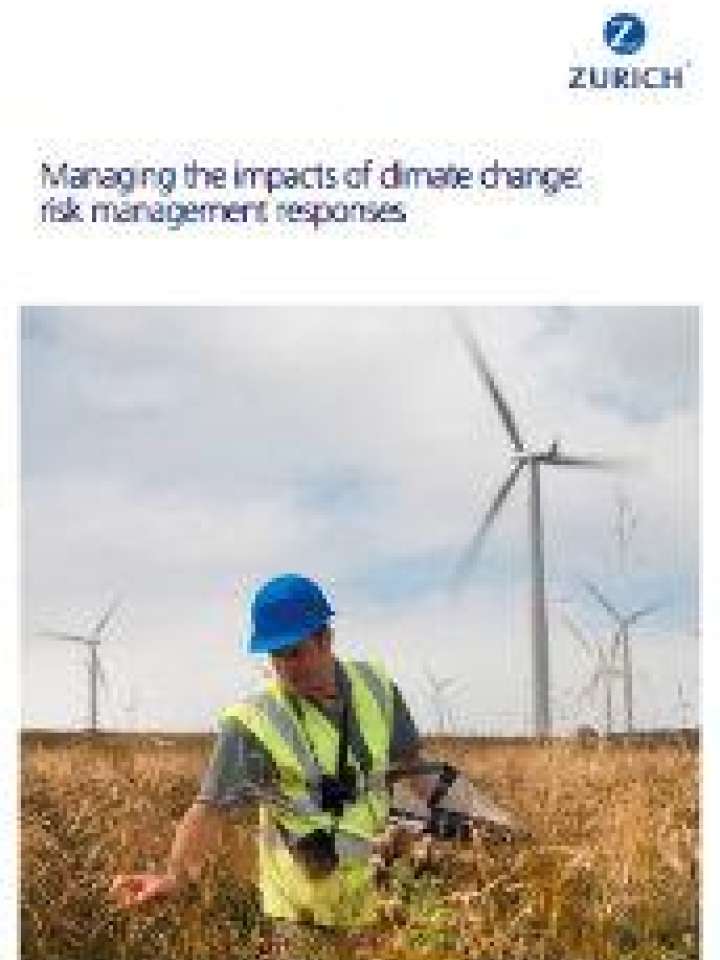Managing the impacts of climate change: risk management responses
This report examines two scenarios: One scenario is based on the failure to act on climate change, resulting in a steady rise in temperature and rising physical risk. The other scenario assumes that effective measures are taken to reduce carbon emissions, in line with keeping the rise in global temperature below 2 degrees Celsius (2 C) relative to pre-industrial levels by 2100. This is consistent with the main aim of the COP 21 Paris Agreement, but carries a number of transition risks with it.
Broadly speaking, risk management responses to climate change risks fall into two categories: adaptation to the largely physical consequences of climate change and mitigation of greenhouse gas (GHG) emissions and its associated transition risks.
Whilst many solutions for the highly interconnected risks from climate change will need to be sought at a multistakeholder level, there are specific actions businesses can take and tools they can use. Zurich recommends developing and acting upon a climate resilience adaptation strategy. This strategy should: identify the broad business and strategic risks; develop a granular view of the risks involved including, for example, individual locations; develop a mitigation strategy involving insurance and resilience. Meanwhile, building an enterprise GHG emission mitigation strategy and framework, especially in carbon-intensive industries, will help to actively manage the downside and capitalize on the upside of climate change. Boards play a pivotal role in this process.
There are a number of risk management tools and practices at companies’ disposal. They include risk management framework approach, applying Zurich’s total risk profiling (TRP) approach from a climate change perspective to better assess hazard level, exposure and controls and other best practices.
For example, as part of Zurich’s flood resilience program, the Post Event Review Capability (PERC) provides research and independent reviews of large flood events. It seeks to answer questions related to aspects of flood resilience, flood risk management and catastrophe intervention. It looks at what has worked well (identifying best practice) and opportunities for further improvements. The report identifies a set of risk management recommendations which Zurich believes can apply to a wide range of climate and weather-related perils.
Additionally, the report espouses a five-step approach: assess and identify; explore and investigate; implement, appoint; collaborate can together frame the risk management response to a wide range of physical climate-related perils. The five-step response to water scarcity, rising temperatures, flooding and windstorm are listed in the table found in Section 5.3.
It should be clear by now that, whether climate change is sufficiently addressed or not, society faces greater risks ahead. The question is: Will they be mainly based on rising temperatures or the attempts to contain climate change? To help navigate this uncertainty, Zurich developed a scorecard that attempts to measure progress and commitment in critical areas, and to detect changes in direction around climate change. While good progress has been made, our scorecard tells us this is still falling short of what is needed to sustainably transition the global economy and societies to a 2 C scenario.
It is to be hoped that technological breakthroughs, such as in carbon capture or electricity storage, can significantly alter the profile of climate change and the commensurate risks and opportunities that present themselves. If not, the longer it takes to adequately tackle global warming, the greater the efforts and disruption will be needed in the decades ahead to counter the rise in extreme weather events.
The aim of this report has been to set out the potential future trajectories of climate change and our advice to businesses and policymaker on risk management response. However, Zurich acknowledges that some readers will appreciate further background on what the physical impacts from climate change may look like, including regional profiling. This information can therefore be found in the report’s appendix, in Section 5.
Explore further
